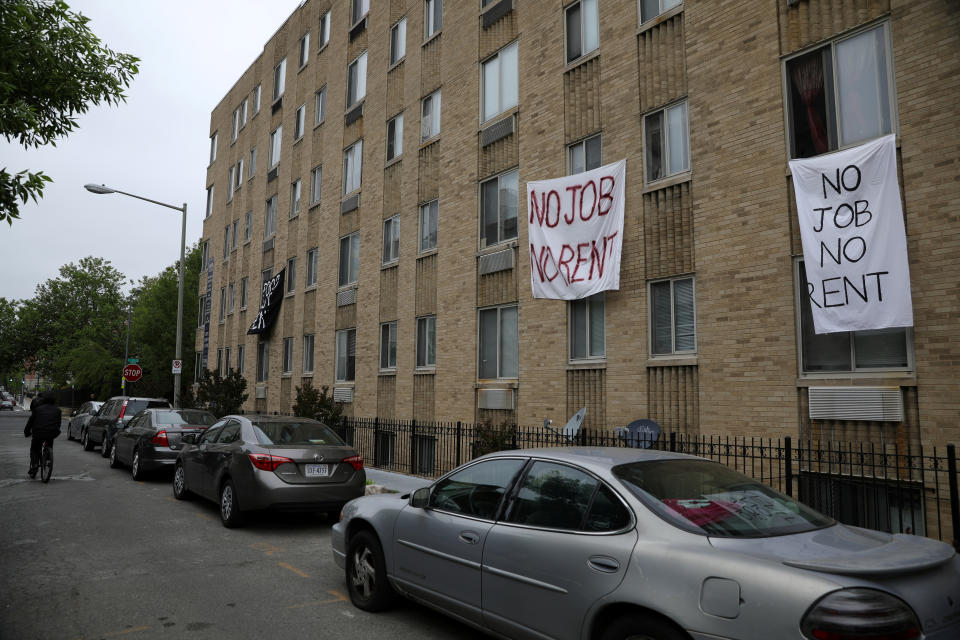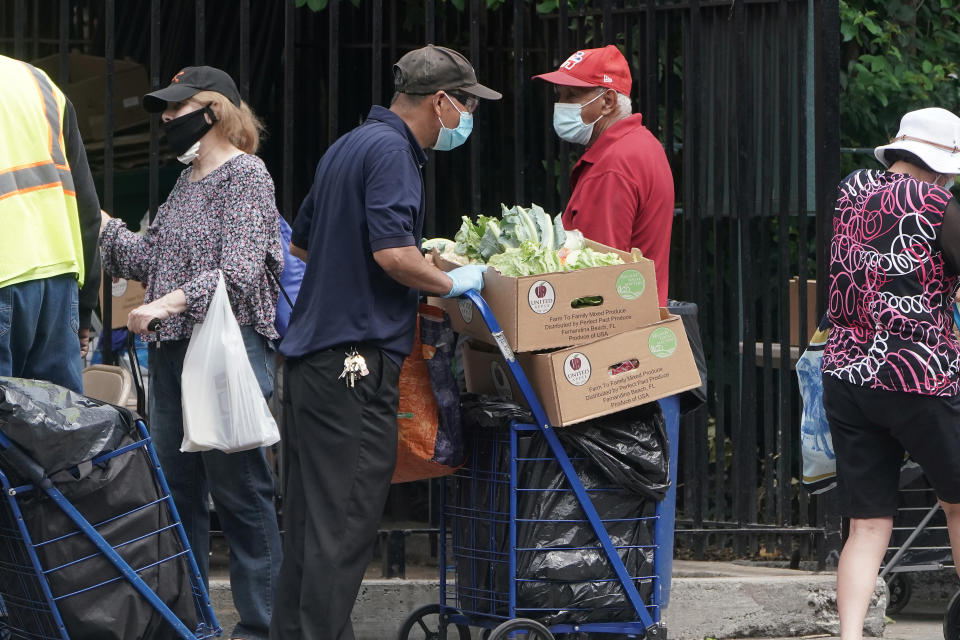America’s financial struggles: Here’s what Joe Biden faces in January 2021
Katoncia Holder, jobless since March, has one month of rent and car payment left before becoming flat broke. The 32-year-old is leaning on credit cards to make ends meet.
“I worry every day now about what I’m going to eat and how I’m going to get gas,” the Los Angeles resident told Yahoo Money. “I’m terrified.”
While much of the economy is rebounding, Holder is among the millions of jobless Americans facing housing and food insecurity, the risk of utility shutoffs, and potentially long-term unemployment, a perilous landscape that President-elect Joe Biden must work to solve when he takes office on Jan. 20.
The remaining supports from the CARES Act and individual states are expiring at the end of the year — eviction moratoriums, protections against power and water disconnections, student loan payment deferrals, and the last of jobless aid for freelancers and contractors — with nothing to replace them so far on the horizon.
“The president, in concert with the new Congress, will have a short and critical window to address the expiring provisions and ensure that people who need financial assistance can receive it,” George Ratiu, senior economist at Realtor.com, told Yahoo Money. “The past six months proved that fiscal stimulus offered a solid bridge for the economy, but with COVID cases and health concerns rising as we head into the cold winter months, it seems clear that additional funds are needed to bridge the gap.”
Here’s the state of play for Biden.
Unemployment
By the numbers: About 21.5 million Americans are receiving some type of unemployment benefits. While the unemployment rate has fallen to 6.9%, the pace of initial weekly jobless claims remains elevated — over 750,000 in the most recent week — and there are still two jobless Americans per job opening. Black and Hispanic Americans are faring worse, with their unemployment rates at 10.8% and 8.8%.
Out-of-work adults already saw their unemployment income drop, once in July when the extra $600 in weekly benefits expired, and then again this fall when the extra $300 to $400 in benefits ran out under the Lost Wages Assistance (LWA) program.
Those who have been unemployed since late March exhausted their regular state benefits in September in some states and have moved on to other programs. Workers who received the Pandemic Unemployment Assistance (PUA) benefits — for those who don’t usually qualify for regular benefits under current rules — will see that extra support expire at the end of the year.
“These people have been living on very little for a long time now,” Michele Evermore, a senior policy analyst at the National Employment Law Project, told Yahoo Money.
Housing

By the numbers: Since the end of the third quarter, 11.0% of renters have missed one payment over two quarters, 4.0% missed two payments, 2.8% missed three payments and 3.8% missed four or more payments, according to the Mortgage Bankers Association. In September, 6 million renters had missed at least one payment, the MBA’s Research Institute for Housing America found.
The Centers for Disease Control and Prevention enacted a second eviction moratorium in September after the one under the CARES Act expired in July. That CDC moratorium expires on December 31, and renters who took advantage of it will owe back rent they have to repay.
Between 30 million to 40 million renters in 17 million households are at high risk of losing their homes this winter, according to Diane Yentel, CEO of the National Low Income Housing Coalition.
“This has enormous, negative consequences for individuals and families, communities, and our nation’s public health and economy and must be prevented,” Yentel said. “One of [Biden’s] first emergency actions must be implementing a broad and uniform moratorium on evictions. Then he and the new Congress must quickly enact a COVID-19 relief package that includes at least $100 billion in emergency rental assistance to keep renters stably housed during the pandemic.”
Utilities

By the numbers: State-level protections against heating and water disconnections during the pandemic are uneven. Only 31 states have these protections still in place, according to the National Energy Assistance Directors' Association. Another 11 states have temperature shutoff protections in place for the winter, but these are not as broad as the COVID-19 protections and leaves those residents vulnerable to disconnections.
The $900 billion from the CARES Act to help families pay their utility bills has also largely run out. Many local and state offices for the Low Income Home Energy Assistance Program have closed their doors on new applicants, according to Karen Lusson, staff attorney at the National Consumer Law Center, a nonprofit focused on low-income populations.
Americans are already falling behind on their utility bills. The NEADA estimates that households that are behind on payments owe nearly $800, and by the end of winter, that could grow to $1,700, according to Mark Wolfe, the executive director at NEADA.
“The number of people that are behind, it’s like 1 out of 7 families,” Wolfe said, citing that many are unemployed and low income. “They’re service employees with limited savings and now they’re struggling.”
Food insecurity

By the numbers: About 10.9% of U.S. households report facing food scarcity, according to a Census tracker, slightly higher than the 10.5% of households that experienced food insecurity at some point in 2019, according to data from the U.S. Department of Agriculture (USDA). That percentage has ticked up over the past two weeks.
But experts worry the need for food supplies will remain elevated as long-term unemployment persists, government supports expire, schools remain closed, and surging COVID-19 cases require local businesses to shut down temporarily.
In Houston, the need for food assistance has backed down from the extreme levels from the spring and early summer, but distributions at the Houston Food Bank are still greater than 1.7 times normal, according to president and CEO Brian Greene.
In Los Angeles County, the need for food assistance “remains at an unprecedented level,” said Los Angeles Regional Food Bank President and CEO Michael Flood.
“The Los Angeles Regional Food Bank's food distribution increased by 70% at the onset of the pandemic and is now running 145% higher than the pre-pandemic period,” Flood said. “Because our local unemployment rate is 15% — nearly double the national unemployment rate — we project that the demand for food assistance will remain at a high level for the rest of this year and into 2021."
Dhara, Denitsa, and Stephanie are reporters Yahoo Money and Cashay. Follow them on Twitter at @Dsinghx, @denitsa_tsekova, and @SJAsymkos.
Read more:
Workers will see smaller paychecks next year under Trump's payroll tax deferral
President Trump's payroll executive order could leave Americans with 'substantial tax liability'
The IRS is failing to collect billions in back taxes owed by super rich Americans
Tax expert: Americans who don't file leave ‘billions of dollars’ on the table
Read more personal finance information, news, and tips on Cashay

 money
money 
